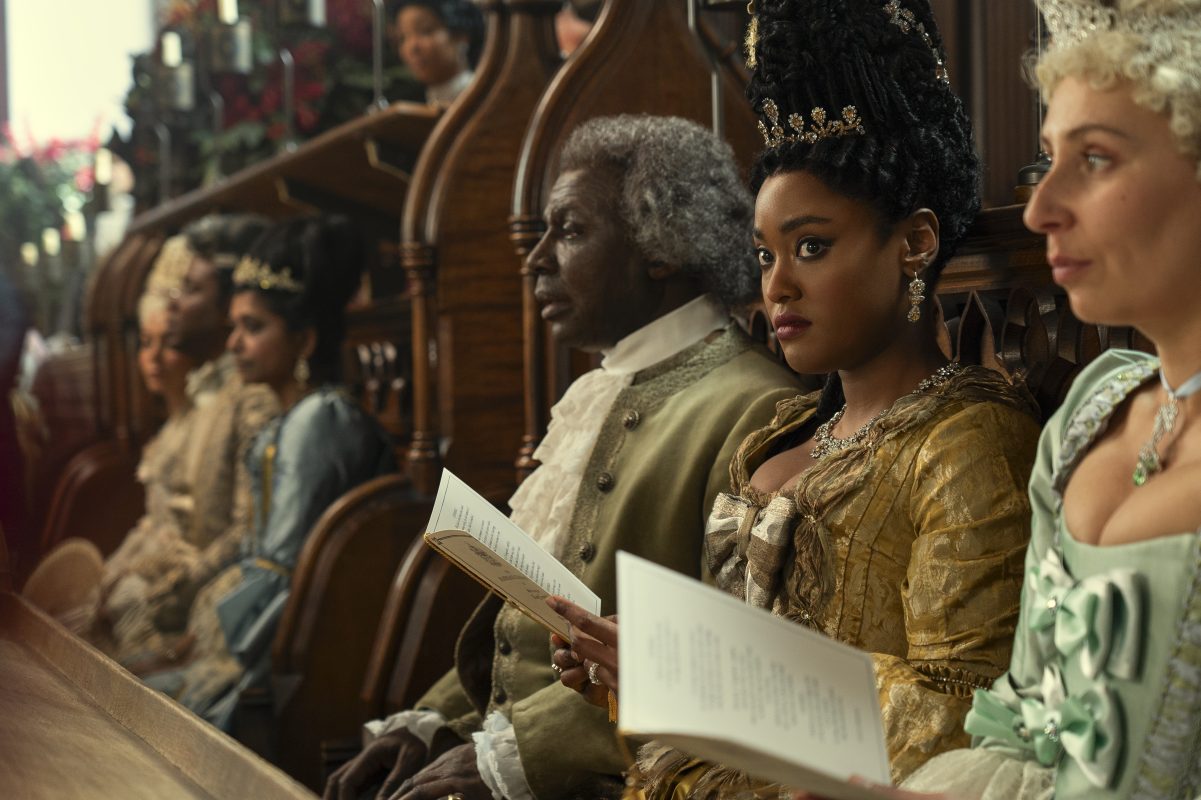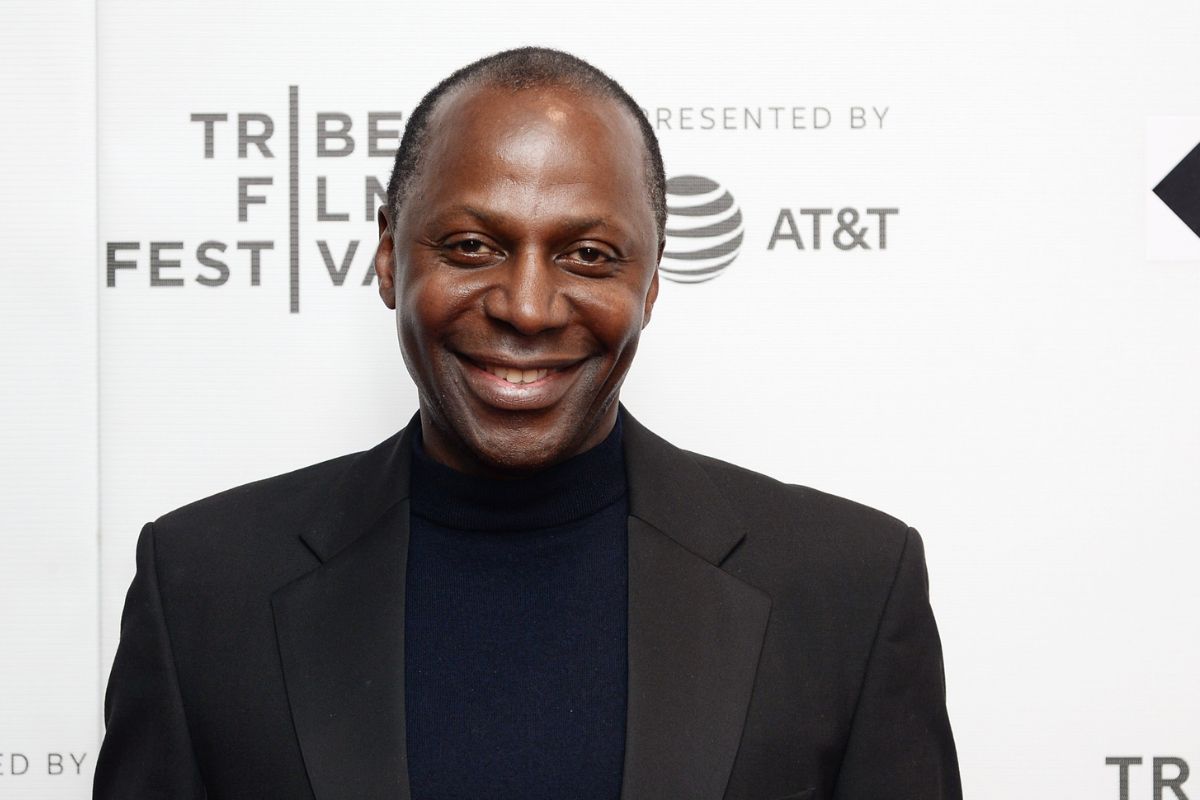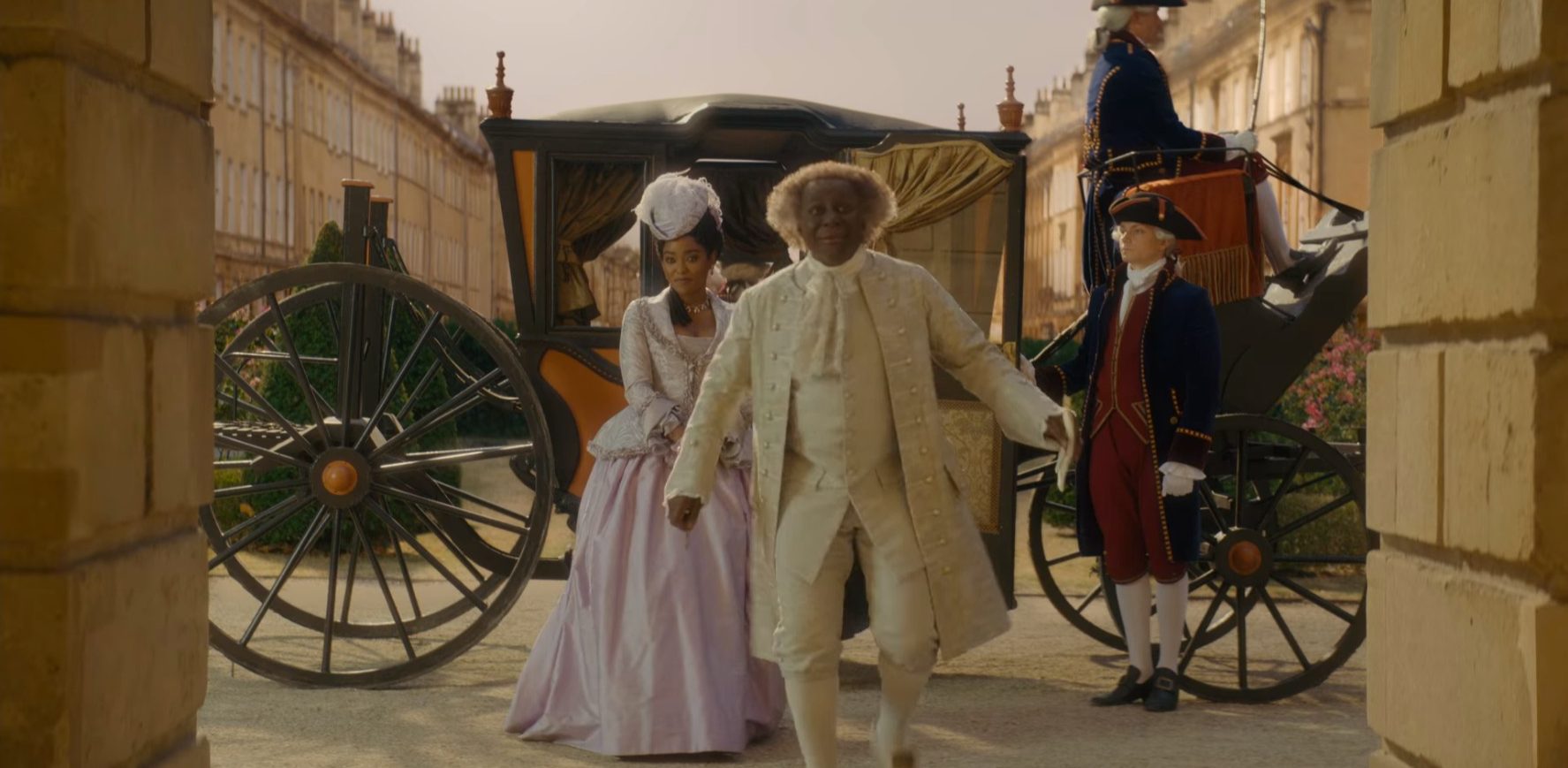‘Bridgerton’ Spinoff Repeats a Disappointing Pattern From the First Season

Against my better judgment, I watched Netflix’s spinoff prequel to Bridgerton, Queen Charlotte: A Bridgerton Story, and the six-episode mini-series is just as visually stunning as previous seasons of the Julia Quinn-adapted work. It also features many improvements to the series in constructing an origin story for the temperamental Queen ruling this verison of Regency-era England. All this while giving us great chemistry between performers and great drama. However, in elaborating on the backstory of the sharpest character of the Ton, Lady Danbury (Adjoa Andoh), the show created another issue of colorism and writing in an infamous racial caricature.
This article contains historical racial slurs, mention of sexual assault, and spoilers for Queen Charlotte: A Bridgerton Story.
In Queen Charlotte, we see how younger Lady [Agatha] Danbury (Arsema Thomas) became the free single woman she is in the present Bridgerton timeline (the 1810s). The heteronormative society only affords independence to Agatha because she has “paid her dues.” It’s only after marriage and beginning the process of producing heirs that women can revel in “den[s] of iniquity” (like Daphne in Bridgerton s1e7). Also, Lady Danbury is super rich and has friends in high places. While characters like the Featheringtons are in constant crisis due to the financial ramifications of losing a patriarch, lady Danbury is free to do whatever she wants.
Lord Danbury

In Queen Charlotte, Agatha gets a more detailed backstory—including royal heritage to the Kpa-Mende Bo Tribe of Sierra Leone. (The name of the second British colony in Africa and later country.) Most importantly, the show gives insight into her relationship with Lord [Herman] Danbury (Cyril Nri) and how they received their titles/status. With this character comes the most frustrating element of this show (much like Bridgerton‘s first season): colorism against and vilification of the darkest Black men.
Queen Charlotte writers constructed Herman as a racial stereotype most resembling the minstrel show’s Zip Coon. Created in early 1800s American Theater, the Zip (as I’ll be referring to it going forward) generally was a free Black man who sought to blend into upper (white) society. The gag was that a Zip could never fit in because of his supposed biological nature.
The excessive mistakes and mishaps in these attempts (core to the character) were played for laughs. He was a “gangling servant dressed in the master’s clothes.” This character often wore mismatched clothes and is a collage of stereotypes put on Black people—especially men. This includes being always sexually available, bad with money, and speaking in malapropisms.
Herman doesn’t resemble a Zip just because the Black bourgeoisie of Bridgerton is seeking to integrate society. (And saying so would be racist!) It’s how he is clueless about how the court works, and his exaggerated arrogance and the bumbling around. His inability to smoothly transition into (white) upper society is contrasted with his wife—someone he takes credit from when things go well. This positioning is also unnecessary because viewers already respect Agatha’s resourcefulness and wit. This sympathy towards Agatha for her hapless husband comes at the expense of the Zip baggage.
I don’t write this lightly. I’m drawn to Bridgerton because I love seeing actors of color in elaborate costumes performing in period pieces, but there’s a burgeoning online pushback against any Black performer not dressed to the nines when wearing vaguely European historical dress. Among the nastiest are trolls who are saying Black cottage-core enthusiasts are dressing like slaves. This criticism is not that. This is about everything altogether with this character and how Hernan’s development fits into the wider Bridgerton series.

Additionally, precisely half of Herman’s scenes (five out of the ten) depict him sexually assaulting Agatha. Despite the show’s past issues with consent, the spinoff frames these acts of marital rape as a running joke (through scoring, cinematography, and acting) and as scene transitions. While sexual prowess doesn’t inherently relate to your morality, this lack of self-awareness is propped up as just another failing by Herman as a man. The final time is after he drags her to the bedroom after a successful ball at their estate. He dies moments later.
After Hermans’ death, the show expands upon how much we are not supposed to like this character in a conversation with Agatha and her maid, Coral (Peyvand Sadeghian). Until this point, Agatha communicated her disgust for Herman through glances to Coral and post-coital baths drawn by Coral. However, during her widowing period, Agatha tells Coral she feels strange with her new freedom. Because her parents promised her to Herman at age three, her whole identity felt wrapped with her late husband. This is horrifying, but also weird that Agatha is the only woman who gets this backstory. The arrangement of young girls to fully adult men was more common, but this has been absent across Bridgerton. The first time we see this is with the sole prominent non-white couple.

Because Agatha never expressed an interest in sex (even beyond her husband), I thought she was asexual. However, during her widowing period, Agatha hooks up with the first noble white man that talks with her for two seconds, Lord Ledger (Keir Charles). After the mourning period, she courts with the Queen’s brother, Duke Adolphus (Tunji Kasim).
Colorism in Bridgerton
This whole situation would not feel so blatant if this were not a recurring issue in the franchise or with other work involving the executive producer, Shonda Rhimes. The show and many people behind it (up through Netflix, too) have constant issues with colorism. Colorism is the favoring of lighter skin complexion over darker ones. (This sometimes extends to having Eurocentric features.)
All named women in the first season were light-skinned biracial Black people except Lady Danbury—who was not a love interest. The only two dark people were men. This included Simon’s boxer friend Will (Martins Imhangbe) and his father, The Duke of Hastings (Richard Pepple). Simon’s father was the darkest performer and served a role similar to an antagonist. The Duke of Hastings abused his son and berated him for his disabilities. In season two, Bridgerton appeared to have taken the criticism. The show cast two dark, beautiful Tamil-British women. Writers also carefully adjusted elements in the relationship between the sisters so as not to fall into familiar tropes.
However, once again, the show has slipped into its old ways. Without reading the books, viewers cognizant of colorism could fairly accurately predict who from the cast would play abusers and who would play a love interest—particularly among the men across 22 episodes. A woman’s marriage prospects on this Ton appear to improve significantly if she finds herself a white or biracial (specifically half-white) man. Every single person mentioned is the victim of bad writing and colorism. They did their best with the writers’ and showrunners’ own unchecked bias working against them.
(featured image: Netflix)
Have a tip we should know? [email protected]
